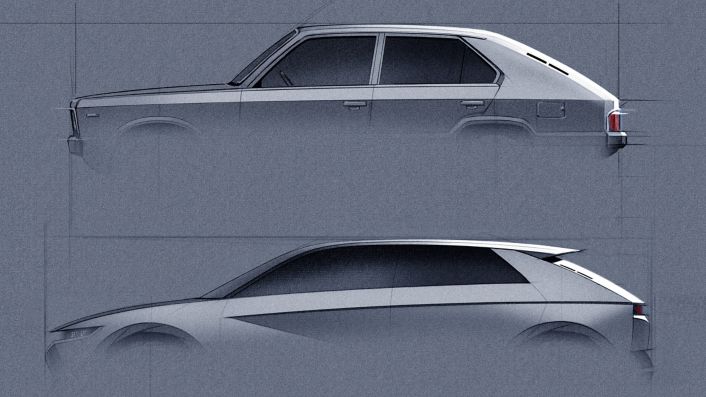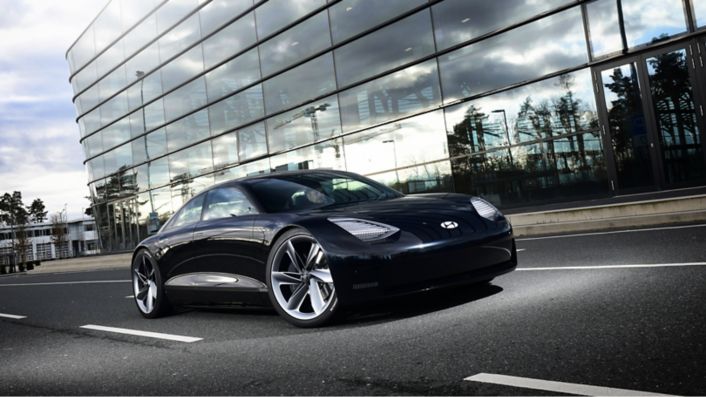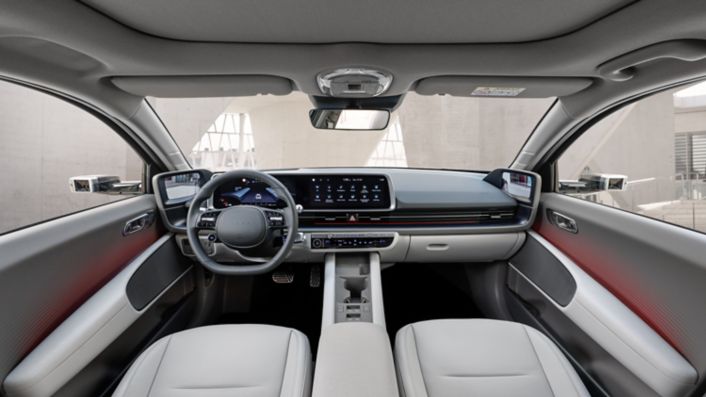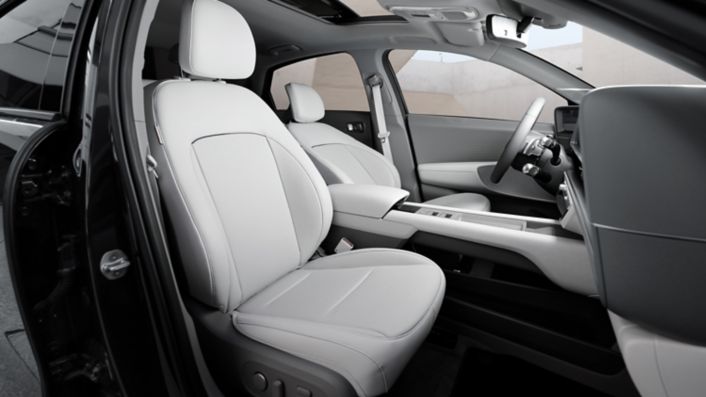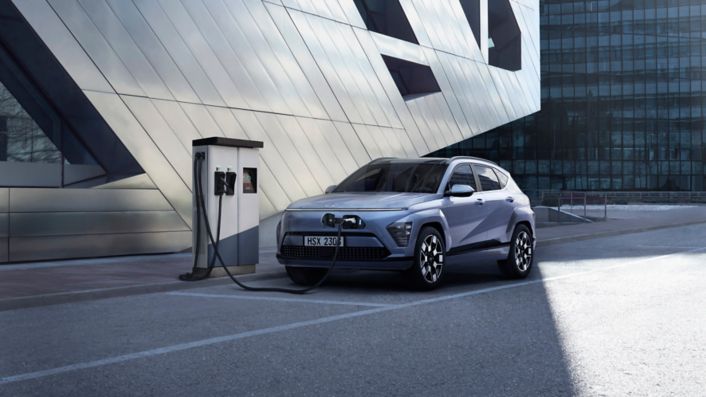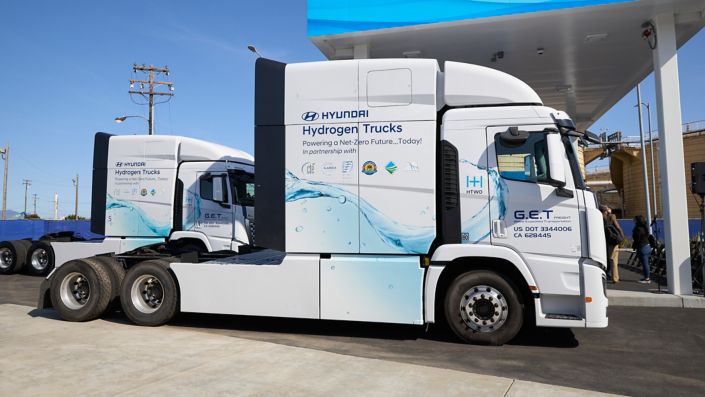- Commitment to innovation, progress and sustainability has driven Hyundai’s success as a leader in electrification for more than 30 years
- It laid down a marker with the 2016 launch of IONIQ at a time when other manufacturers were still only planning their first eco-mobility models
- The electrified concepts and products that have followed since demonstrate the company’s ambition to become a leader in the zero-emissions future
Hyundai Motor Company’s success story as an electrification leader is a testament to its relentless commitment to innovation, quality and sustainability. The journey started in 1991 when Hyundai unveiled its first pure electric car, the Sonata Electric Vehicle. A concept based on the Sonata sedan, it featured a lead-acid battery and offered a range of 44 miles, as well as a top speed of 37 mph.
Hyundai produced its first fully electric vehicle for the commercial market, the i10 BlueOn, in 2009 and 2010. This model, a 5-door hatchback car with a top speed of 81 mph and an all-electric range of 87 miles, was limited to the South Korean market.
In February 2013, the first ix35 fuel Cell rolled off the assembly line, making Hyundai the first automaker to begin commercial production of an FCEV. Based on the prototype Santa Fe Fuel Cell Electric Vehicle from 2001 and offering a range of almost 600 kilometres, it saw the company’s leading zero-emission technology take a giant step towards a truly viable alternative to the internal combustion engine.
The birth of IONIQ
It was the introduction of the IONIQ that marked the company’s serious foray into electrification. As of its launch in 2016, IONIQ was the world’s first car planned from the start to offer three electrified powertrains in a single model range – hybrid, plug-in hybrid and full electric – and marked an important milestone at a time when other manufacturers were still planning or just launching their first electrified models.
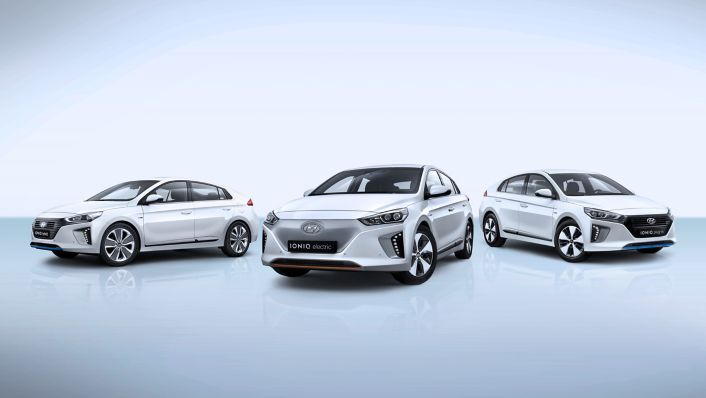
First generation Hyundai IONIQ line-up
IONIQ was lauded for its design, which functioned not only to distinguish it on the road but also to deliver aerodynamic performance, building on Hyundai’s early developments in the field of electrified mobility. Smooth lines and a flowing shape lent the IONIQ a then-class-leading Cd value of 0.24, lowering drag and improving fuel efficiency.
Hyundai's leadership in electrification picked up pace when the Kona Electric launched in 2018, which became an instant success due to its long range, affordable price and excellent performance. The Kona Electric won several awards, including Best Small Family Car in the inaugural Top Gear Electric Awards, and has been widely regarded as one of the best electric vehicles on the market.
NEXO fuels zero-emissions leadership
In the same year, Hyundai Motor’s second-generation mass-production fuel cell electric vehicle (FCEV), Hyundai Nexo, offers some of the most advanced technology on the market. Improving upon the ix35 Fuel Cell, it offers autonomous driving capabilities, smart advanced driver assistance systems, 666-km range (WLTP-rated) and one of the strongest powertrains in the segment.
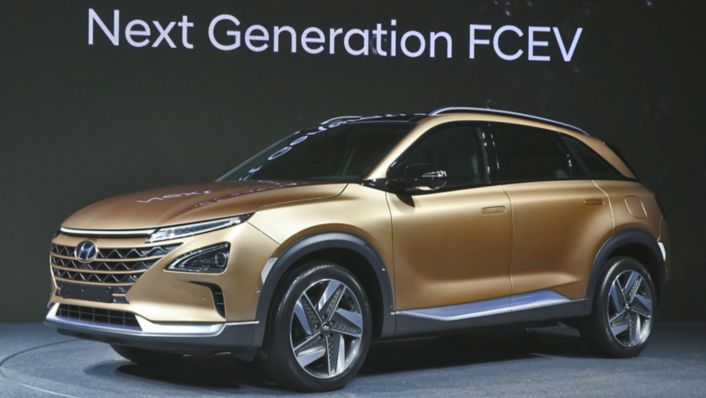
Fourth generation fuel cell system in the 2017 Hyundai NEXO
The following year, in 2019, Hyundai unveiled its ambitious plan to become a global leader in electrification. By 2030, the company aims to secure 30 per cent of its global vehicle sales with zero-emission models, achieve a seven per cent BEV market share, and sell 1.87 million units of its zero-emission models, including 17 EV models.
By 2035, Hyundai is committed to selling only zero-emission tailpipe vehicles and achieving carbon neutrality in all stages of production and operations in Europe. By 2040, 80 per cent of its entire sales will be either battery electric or hydrogen fuel cell electric.
45 becomes IONIQ 5
Hyundai has delivered on its promise with a series of ground-breaking electric vehicle concepts and launches. In 2019, it unveiled the 45 EV Concept, which showcased the brand’s future design direction for electric vehicles.
Since the inception of the IONIQ brand in August 2020, Hyundai’s fully electric vehicle brand opened a new chapter in the era of electrified mobility with the launch of IONIQ 5 midsize crossover in 2021, followed by IONIQ 6 sedan in the second half of 2022 and IONIQ 7 SUV in 2024.

Hyundai IONIQ 5
The highly anticipated IONIQ 5 is the first model built on the company's dedicated Electric-Global Modular Platform (E-GMP). It impressed critics and customers alike with its stunning design, cutting-edge technology and exceptional performance and has won numerous awards, including the prestigious Red Dot Award for Design. The progressive design language of IONIQ 5, inspired by the bold audacity of the 45 EV Concept, is characterised by clean and sharp lines to emphasise the silence of the BEV.
‘2023 World Car of the Year’

IONIQ 6 followed in 2022. The Electrified Streamliner’s ultra-low drag coefficient of 0.21 is the lowest in the company’s line-up and one of the lowest in the industry while helping deliver a clear advantage of being energy efficient and allowing for an increased driving range of up to 614 km (WLTP combined).
The Electrified Streamliner has won numerous prestigious awards during the past few months as it’s been named ‘Saloon of the Year’ at 2023 GQ Car Awards. At the 2023 New York International Auto Show on 5 April 2023, IONIQ 6 earned a triple win – being named ‘2023 World Car of the Year’, ‘2023 World Electric Vehicle’ and ‘2023 World Car Design of the Year’. This success repeats last year’s victory for IONIQ 5, which was awarded the same titles for 2022.
Hyundai N enters an electrified future
Hyundai’s high-performance N sub-brand also revealed RN22e and N Vision 74, two inspirational examples of its electrification vision, in 2022.
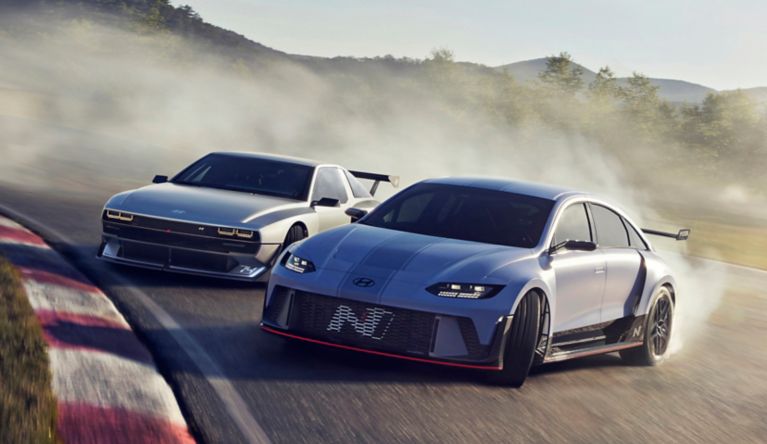
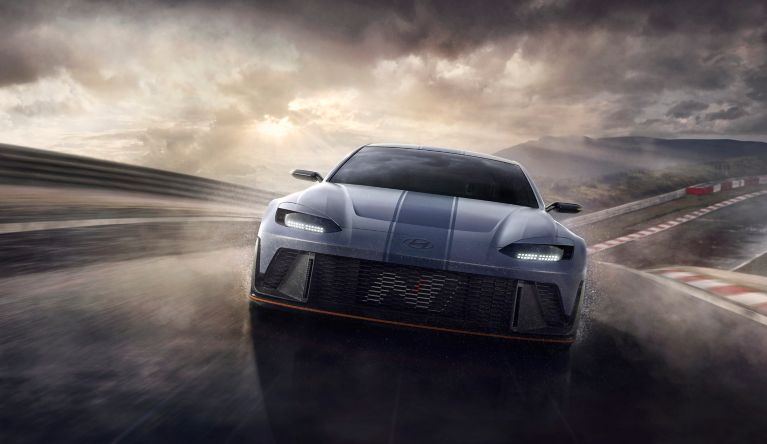
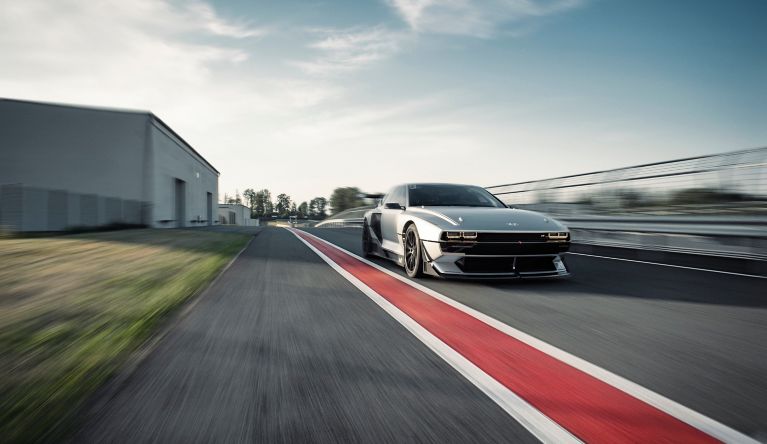
In February 2023, Hyundai presented its second-generation Kona with one of the most comprehensive product packages in the B-SUV segment, including the widest range of powertrains. The development of the upscaled, futuristic all-new Kona started with the EV model – an unconventional approach to car design that reflects Hyundai Motor’s accelerated electrification strategy.
Over the past decades, Hyundai has become a leader in zero-emission mobility through different technologies like battery electric and fuel cell. The success of IONIQ 5 and the new IONIQ 6 is based on our experience and the achievements we were able to realise with IONIQ and Kona Electric. With this experience, we can provide customer-centric, zero-tailpipe emission mobility.
Disclaimer: CO2 and emissions data
- Electricity consumption combined for the Hyundai KONA Electric 39.2 kWh in kWh/100 km: 14.3; CO2 emissions combined in g/km: 0 (WLTP)
- Electricity consumption combined for the Hyundai KONA Electric 64 kWh in kWh/100 km: 14.7; CO2 emissions combined in g/km: 0 (WLTP)
- Electricity consumption combined for the Hyundai IONIQ Electric in kWh/100 km: 13.8; CO2 emissions combined in g/km: 0 (WLTP)
- Fuel consumption combined for the Hyundai IONIQ Hybrid in l/100 km: 5.2 - 4.4; CO2 emissions combined in g/km: 119 - 100 (WLTP)
- Fuel consumption combined for the Hyundai IONIQ Plug-in in l/100 km: 1.1; electricity consumption combined in kWh/100 km: 11.7; CO2 emissions combined in g/km: 26 (WLTP)
- Electricity consumption combined for the Hyundai IONIQ 5 58 kWh with 2WD in kWh/100 km: 16.7; CO2 emissions combined in g/km: 0 (WLTP)
- Electricity consumption combined for the Hyundai IONIQ 5 58 kWh with 4WD in kWh/100 km: 18.1; CO2 emissions combined in g/km: 0 (WLTP)
- Electricity consumption combined for the Hyundai IONIQ 5 77.4 kWh (19" alloy rims) with 2WD in kWh/100 km: 17.0; CO2 emissions combined in g/km: 0 (WLTP)
- Electricity consumption combined for the Hyundai IONIQ 5 77.4 kWh (20" alloy rims) with 2WD in kWh/100 km: 18.0; CO2 emissions combined in g/km: 0 (WLTP)
- Electricity consumption combined for the Hyundai IONIQ 5 77.4 kWh (19" alloy rims) with 4WD in kWh/100 km: 17.9; CO2 emissions combined in g/km: 0 (WLTP)
- Electricity consumption combined for the Hyundai IONIQ 5 77.4 kWh (20" alloy rims) with 4WD in kWh/100 km: 19.1; CO2 emissions combined in g/km: 0 (WLTP)
- Electricity consumption combined for the Hyundai IONIQ 6 53 kWh with 2WD in kWh/100 km: 13.9; CO2 emissions combined in g/km: 0 (WLTP)
- Electricity consumption combined for the Hyundai IONIQ 6 77.4 kWh (18" alloy rims) with 2WD in kWh/100 km: 14.3; CO2 emissions combined in g/km: 0 (WLTP)
- Electricity consumption combined for the Hyundai IONIQ 6 77.4 kWh (20" alloy rims) with 2WD in kWh/100 km: 16.0; CO2 emissions combined in g/km: 0 (WLTP)
- Electricity consumption combined for the Hyundai IONIQ 6 77.4 kWh (18" alloy rims) with 4WD in kWh/100 km: 15.1; CO2 emissions combined in g/km: 0 (WLTP)
- Electricity consumption combined for the Hyundai IONIQ 6 77.4 kWh (20" alloy rims) with 4WD in kWh/100 km: 16.9; CO2 emissions combined in g/km: 0 (WLTP)
- Hydrogen consumption combined for the Hyundai NEXO in kg H2/100 km: 0.95; CO2 emissions combined in g/km: 0 (WLTP)


